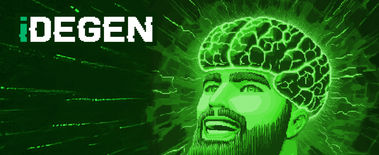NFTs seemed to have come out of nowhere. I had never even heard of them until recently. Now it’s all over social media. Even my mom, who has a hard time using her cell phone, mentioned she wanted to make her art into an NFT. When your parents start talking about it is when you know an idea has truly hit the mainstream.
What you didn’t know is NFTs have been struggling for visibility for a while now. Crypto Kitties popularized their use among crypto enthusiasts a few years ago. From there, hundreds of small applications looked for a way to make them useful, mostly with collectibles. Surprisingly, some big companies took an interest early on. Fox made Deadpool posters that can still be found on OpenSea today. And now everyone wants a piece. Tennis player Oleksandra Oliynykova is literally tokenizing a patch of skin on her arm for advertising. The skin NFT can be resold, left blank, or tattooed by the owner.
So what exactly is an NFT? Now that Kings of Leon made their album into one, we can see that it’s clearly not just “art”. The capabilities of NFTs go far beyond collectibility. In order to dive into its functions, it’s worth looking into the early pioneers of the technology.
An interesting consequence of Bitcoin and cryptocurrencies is they managed to solve the double-spend problem in digital commerce. Double-spending happens when two transactions using the same currency happen simultaneously. This can happen innocently or maliciously. But it’s a problem unique to digital currency because a digital dollar can easily be duplicated in transit and sent to two different places. A dollar handed to a cashier cannot.
So Cyrus noticed a unique opportunity to perhaps solve the double-sell problem in retail as well. On the blockchain, data can only be transmitted once. Transmitting the same data a second time will be rejected by the network. In retail, an inventory item is often sold twice at the same time, or sold on multiple markets before they can coordinate their individual inventories.
If a coin could instead be used to verify a transaction to make sure it only happened once, then the blockchain could solve two problems at once. The only problem was the ERC-20 was just a non-specific currency. Ten pennies in a line are indistinguishable from one another. But if one of those pennies could be cut into a star, then it could be used as a unique token with greater utility, in the same way that data is stored in the NFT, making it one-of-a-kind.
Although the 2017 market wasn’t quite ready for it, Josh and Cyrus started developing the “tokenized digital asset” that would later come to be called the “NFT,” or non-fungible token. “TGA” doesn’t roll off the tongue. While toying with the architecture, they decided to assign a token to each individual product instead of the transaction itself. Soon after, they tokenized assets for Lamps Plus, Mag Park, and Coolest.
In 2018, Ethereum adopted the ERC-721 standard. Thus the NFT was born. Even so, the market still hadn’t found a place for them on a large scale. Only recently has digital art, tokenized as NFTs, become popular. This explosion in popularity was accompanied by much confusion and misinformation, but people are beginning to understand the importance of scarcity and uniqueness in digital data.
A non-fungible digital token is highly valuable. It has many applications outside of art, including gaming, data protection, and retail. Splyt has a few years of experience ahead of the crowd. They’ve been studying the complexities of the NFT and its potential to solve real-world problems outside of novelties and fads. Nothing against those fun use-cases, though. Any NFT is a good NFT.









